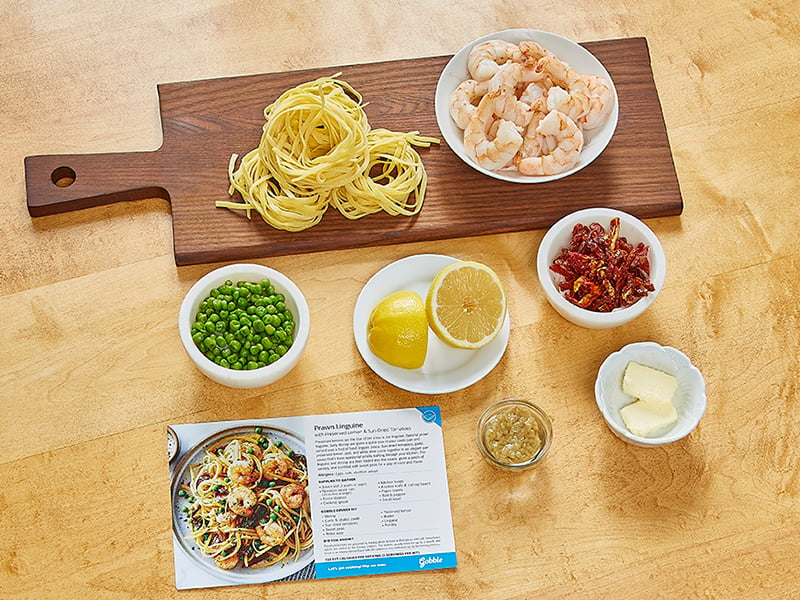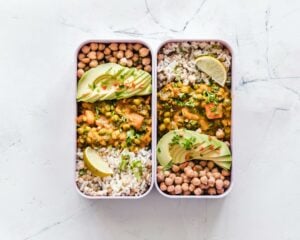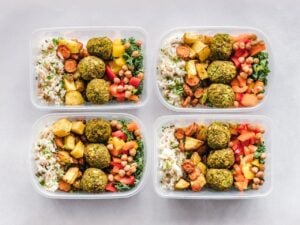Gobble’s Commitment to Food Safety
Food safety is always top priority for Gobble! We take great care to make sure your family receives delicious meals made with fresh, quality ingredients that have been carefully grown, harvested, and prepped. This means our team goes through extensive food safety training, and we hold our vendors up to the same standards, too. Our Quality Assurance & Food Safety team assesses all of our food suppliers, confirming they consistently meet our highest food safety requirements.
We want to ensure that once our freshly prepped ingredients reach your home, they continue to meet these safety standards. We’ve put together a quick guide that covers what to do when you receive your Gobble box, how to properly freeze or store your ingredients, and how to best prepare your meals.
What to expect when you receive your first Gobble box!
Your first Gobble box conveniently arriving on your doorstep — how exciting! We make our service as simple and stress-free as possible for our customers, and it only takes a few deliveries to become a Gobble pro. That said, it’s helpful to know what to expect.
To ensure Gobble dinner kits arrive fresh, we carefully pack all ingredients in a temperature-controlled, thermal-lined box. This keeps the contents fresh for up to 72 hours in transit. Will it spend that much time in transit? Probably not, but we like to be prepared!
As soon as you receive your box, bring it inside and refrigerate the contents. At work when your dinner kits arrive? No problem. Our specialized packaging will keep your food cool until you come home.
Your dinner kits can be stored in the fridge for up to 5 days. If you aren’t ready to cook all of your meals within that time frame, no worries. You can freeze many of our prepped ingredients to use later.
When choosing which meals to cook first and which to freeze, we recommend first using kits that have fragile, fresh-from-the-farm ingredients such as leafy greens and herbs or seafood. Seafood is best when used within 2 days.
Our hardier foods (pastas, sauces, meats, soups, etc.) can be frozen until you need them. To ensure your frozen ingredients keep their fresh taste, we suggest cooking them within 2 to 3 months.
Click here to read our food storage & defrosting tips.

Prepping your kitchen and cooking your ingredients.
Gobble does most of the peeling, chopping, and marinating for you. The “prep” that remains is assembling the ingredients to prepare for cooking.
Always work from a clean prep area and frequently wipe it down with hot, soapy water as you go. Be sure to wash your hands well, both before you begin and after handling uncooked meat or seafood. Use warm, soapy water and wash your hands for at least 20 seconds.
Separate uncooked meat and seafood from other ingredients.
Keep uncooked meat and seafood wrapped and refrigerated until you’re ready to use it. Raw meat and seafood can transfer bacteria to other ingredients that may not be cooked later, so it’s important to prevent cross-contamination. Be mindful of what counter space, containers, or cooking utensils you’ve used with the uncooked proteins and be sure to wash these before using them for other ingredients.Once properly cooked, meat and seafood can safely join the party with the rest of your ingredients!
Cook food to the proper safe temperature.
If you don’t already have a food thermometer, it’s a good idea to get one to ensure all meat and seafood is cooked to the proper safe temperature. We know you’ve seen professional chefs judge this by the color or feel of the protein, but that isn’t always reliable. Food thermometers are inexpensive and simple to use.
These are the safe temperatures recommended by the USDA:
- Beef, pork, veal, and lamb (steaks, chops, or roasts): 145℉ and let rest for at least 3 minutes
- Ground meats: 160℉
- Poultry: 165℉
- Seafood: 145℉
Once your food is cooked, always refrigerate any leftovers within 2 hours (1 hour if the temperature is above 90℉, though we sincerely hope it isn’t that hot in your kitchen!).



